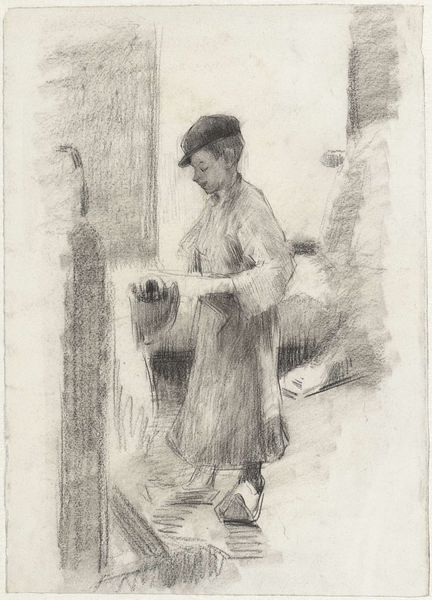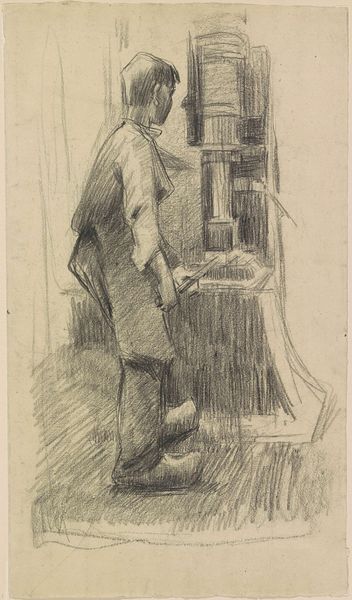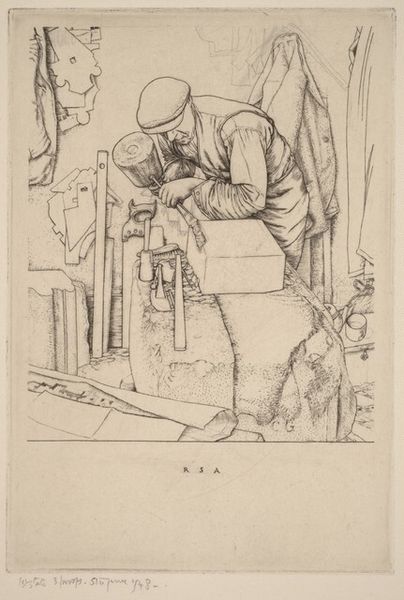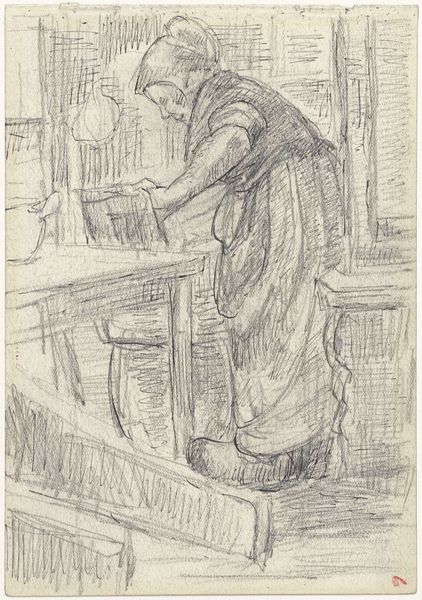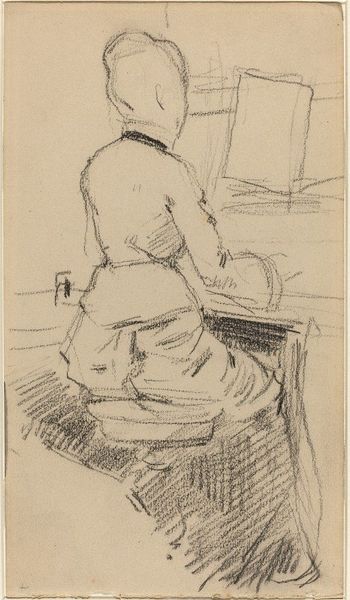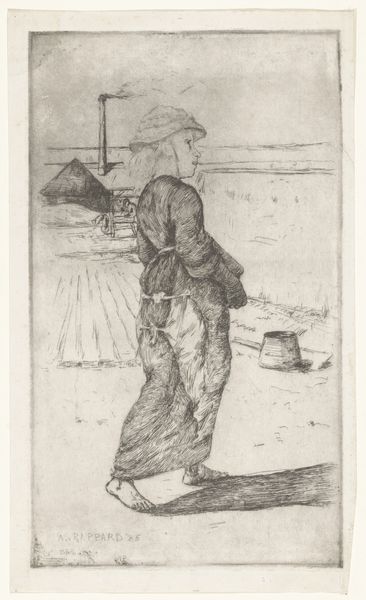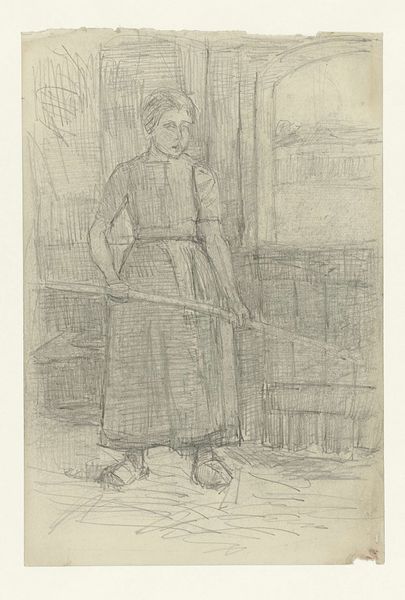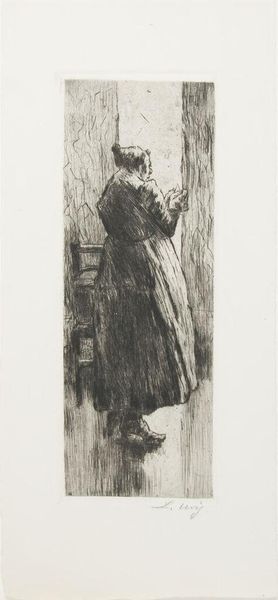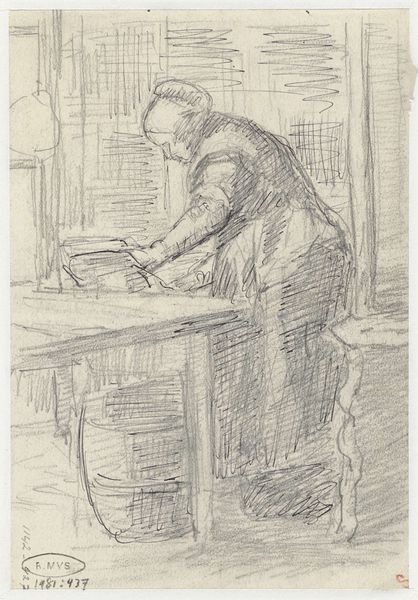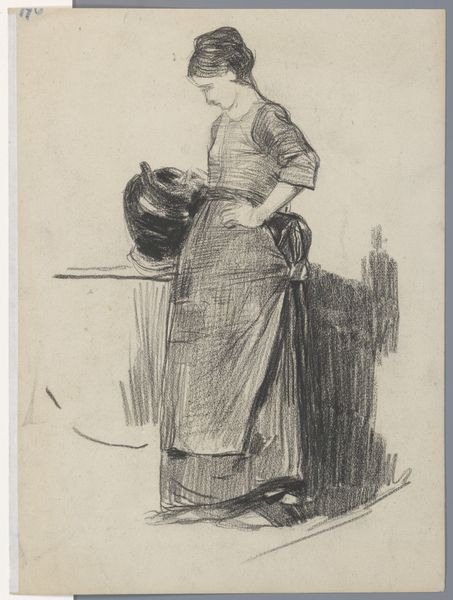
drawing, pencil, graphite
#
portrait
#
pencil drawn
#
drawing
#
pencil sketch
#
charcoal drawing
#
pencil drawing
#
pencil
#
graphite
#
pencil work
#
genre-painting
#
realism
Dimensions: height 560 mm, width 387 mm
Copyright: Rijks Museum: Open Domain
Curator: I'm struck by the stark simplicity and almost melancholic feel of this drawing. Editor: Indeed. We're looking at a work titled "Fabrieksjongen aan het werk", or "Factory Boy at Work," rendered circa 1880-1890. It’s attributed to Anthon Gerhard Alexander van Rappard. The artist used pencil and graphite to depict the scene. Curator: The linear quality emphasizes the youth's stooped posture, doesn't it? And consider the limited tonal range. It amplifies the dreariness, conveying a certain industrial gloom. The sharp outlines almost seem to trap him within the composition. Editor: Precisely. Rappard was known for his social realism. This drawing acts as social commentary on the plight of child laborers during the Industrial Revolution. The setting seems spartan and utilitarian. Note the subject's attire: working cap, smock-like covering and clogs which tell of socio-economic conditions, emphasizing that he is a common laborer toiling. Curator: I'm particularly interested in the artist's choice of medium, and I question that it's intentional that a child worker has been presented in pencil as he's easily erased from social consciousness, if society were not careful about his fate. I like how the softness contrasts with the harsh reality of the subject matter, further highlighting the boy’s vulnerability. Also consider how unfinished it seems— perhaps hinting at his unrealized potential. Editor: The historicity surrounding Rappard, namely his connection to Van Gogh, illuminates his subjects. The late 19th century saw growing concerns about industrial exploitation and societal reform. Rappard engages directly with this political debate, showcasing the human toll through these unsentimental renderings. Curator: Looking closely, the lines used on the young man seem more emphasized, less smudged, especially on his forearms and face. Those lines symbolize toil and a rugged determination perhaps? Editor: Perhaps. One also imagines that this artist had strong political motivations for emphasizing them through their line quality. Curator: Considering the artist's careful composition of line and shade, a compelling narrative emerges of systemic inequity and stunted lives. Editor: The dialogue serves as a potent reminder to consider labor history with human-level dignity and empathy. It allows us to re-think art's capacity to bear witness to historical and contemporary human events.
Comments
No comments
Be the first to comment and join the conversation on the ultimate creative platform.
